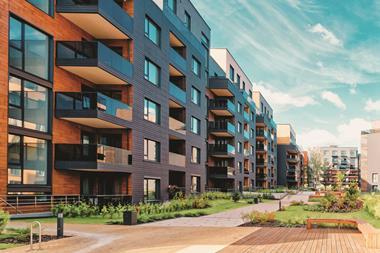The Bank of England’s October Monetary Policy Committee (MPC) meeting delivered what the markets were expecting: an 8-1 vote to keep interest rates on hold.

The tricky balancing act of weighing external concerns against domestic strength is very much at the forefront of policymakers’ minds.
In his role as governor of the Bank of England, Mark Carney believes that external events can and will continue to influence, but not dictate, monetary policy. Money markets have taken the opposite view, with many industry figures believing that recent events in the global economy - from worries about China to massive emerging markets outflows - will delay the timing of the first rate hike into the middle of next year.
Rates have now been stationary for 67 consecutive months, having been held at 0.5% since March 2009. This will continue to be welcomed by homebuyers and
investors alike. According to the Office for National Statistics’ figures for September, UK house prices increased by 5.2% in the year to July 2015, down from 5.7% in the year to June 2015, supported, in part, by low interest rates.
In recent months, however, all eyes have turned Stateside as speculation mounts over whether or not the Federal Reserve will raise rates. For a while it appeared imminent, with economic growth on the up. For a central bank heavily dependent on data as its key metric, this was a strong signal that rates might finally move. But weaker than expected US employment figures and recent global turmoil, such as China’s Black Monday and the Greek debt crisis, have fuelled volatility. All this pessimism over the global outlook means that a rise by either the Federal Reserve or the Bank of England in the next few months is improbable.
Clearbell continues to see investor appetite from the likes of the US, Australia, South Africa and mainland Europe; a clear sign that the potential for a short-to-medium-term rate rise is not influencing investor decisions.
We believe sustained low UK base rates below the long-term average will continue to be the norm. Indeed, as evidenced in five-year swap rates, this continues to look likely. This low norm is partly due to high government servicing costs and lack of sustained export growth, both of which are sensitive to interest rates. In addition, a longer global economic slowdown has increased the risk of deflation or at the very least low inflation, which may continue to exert downward pressure on interest rates in the coming months.
Although conventional wisdom says that interest rates can affect the value of any investment vehicle, particularly real estate, we think in this current stage of the cycle the potential negative factors of interest rates are not at play. With rents in certain UK regions and sectors still to see rental growth following the last downturn, we expect the continued improving economy to result in further rental growth in these areas, which will support property yields at current levels, even if interest rates rise.
In addition, there is currently a large gap between property yields and gilt yields. This large gap will mean that the property market is more able to absorb any interest rate rises.
Even so, in the UK, the historic relationship between interest rates and property yields has shown a fairly weak correlation anyway.
Overall, with rates expected to rise gradually from mid-2016 over a number of quarters, the impact on the real estate market is expected to be minimal.
Manish Chande is a senior partner at Clearbell Capital





























No comments yet